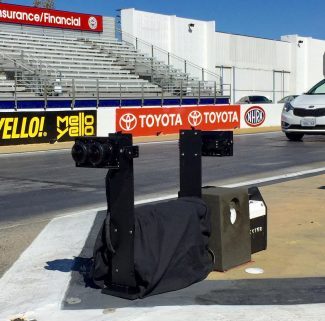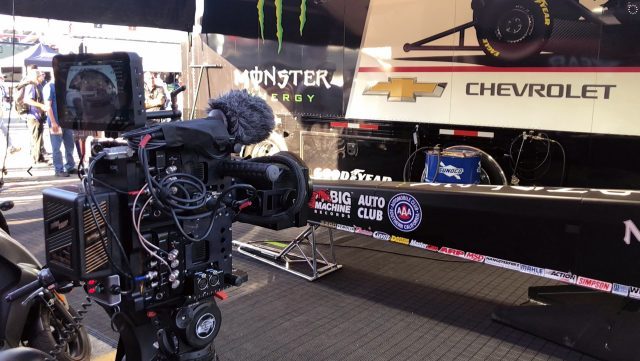I’m not a drag racing fan but I’m at least a somewhat familiar with the sport: two cars line up on a short straight course and race to see who reaches the finish line first. I’ve seen some videos, I’ve read some articles, and I’ve seen the scary wipeouts clips. But never appreciated how insanely fast some of these cars really are until I saw them in VR.
I thought I pretty much knew what I was in for when I strapped on my Oculus Go and jumped into the NextVR app, which recently added highlight footage captured at the National Hot Rod Association’s 2018 Auto Club Finals in Pomona, CA. I was just checking in to see what kind of content had popped up in the app lately. “Oh, drag racing? That sounds interesting.”

With VR cameras placed at key positions near the starting line and along the track, I got a closer perspective of the sport than if I’d actually paid to sit in the stands.
Watching as some of the cars and crews lined up at the starting line, I thought I knew what I was in for, especially as some of what I now realize were just test runs were not unexpectedly fast. But when the cars lined up for real and hit the gas, one thought popped into my mind: “holy $%@#.”
Dragsters accelerate insanely fast. I thought I ‘knew’ that already, from the bits and pieces I’ve seen through regular video over the years, but it wasn’t until seeing it in VR that I went from ‘knowing’ it to ‘feeling’ it. As soon as I took off the headset I wanted to look up exactly how fast these cars go.
Top Fuel dragsters, the fastest category of drag racing cars, apparently reach an excess of 300 MP/H (482 KP/H) in less than four seconds. A speed record set last year by Tony Schumacher put him at 336.57 MP/H (541.65 KM/H) in 3.667 seconds.
To put that into perspective: one of the world’s fastest production cars, the Porsche 918 Spyder, reportedly accelerates 0–60 MP/H (96.5 KM/H) in 2.2 seconds. In the same time, a typical Top Fuel dragster would be somewhere in the neighborhood of 200 MP/H (321 KM/H). To get an even better perspective: go watch a Top Fuel dragster in VR, if not in real life.
After being amazed at seeing how fast the cars accelerated and blasted past my perspective after reaching their stride further down the track, I was reminded of the unique power of live-action VR content. The addition of depth and a proper sense of your own human scale is not just a nice bonus, it’s a transformative property for media. Traditional video can capture people, places, and dialogue well, but it simply doesn’t do a good job of conveying scale or space, and that’s why I never appreciated how fast dragster really are until I saw them in VR.

VR filmmaking hasn’t found out exactly where it fits just yet. There doesn’t seem to be significant benefit to directly translating, say, a sitcom into a VR video production, or plopping a 360 camera down as an afterthought to some traditional video production. Attempts to tell theater-like narratives in VR—where the user has a central perspective— are steadily maturing, but generally speaking, VR filmmakers are still sorting out what kinds of stories are best told using the strengths of VR.
I don’t have the answer, but even seeing something as straightforward as two super fast cars racing down a track in VR gives me a hint that the answer will deeply rely on depth, human scale, and a sense of spatial awareness that only comes from VR.







